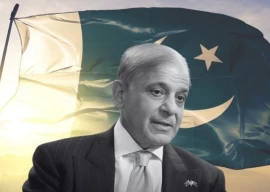
The president asked his security team to come up with a new strategy that would serve America’s interest not only in Afghanistan but also in the large geographical space around the war-torn country. The coupling of Afghanistan with South Asia had been attempted once before. In the policy review of the Afghan situation in the early days of the Barack Obama administration, Washington decided to create a new office that would focus on the larger area around Afghanistan that would include India and Pakistan. But New Delhi objected and wanted to be kept out of any formal arrangement. This was done and the new office was called Afghanistan-Pakistan. Richard Holbrooke, a seasoned diplomat, was put in charge of the office.
The Af-Pak interpreted its mission to work with Kabul and Islamabad and have the two capitals develop a joint strategy with respect to the control of the insurgency that had begun to take a heavy toll in the country. It was under Holbrooke that the Americans began to use the drone as the weapon of choice of dealing with the leaders of the insurgency. Washington did not fully appreciate that the use of unmanned aircraft to fire at the chosen targets would inflict a great deal of collateral damage in the form of civilian deaths. The drones killed hundreds of women and children and led to the strong antipathy among the people in Pakistan about America and the Americans. The Pew Research, a Washington-based organisation that researches public opinion about issues of importance for the American policymakers, found that of all the people it surveyed around the world the Pakistanis had the most contempt for America. This fact — that America was not popular with the general public — could not be ignored by the politicians working out of Islamabad.
These developments in the American Afghan policy occurred while Pakistan was attempting to create a political order in which elected civilians were in charge of policymaking. Previous epochs of close Islamabad-Washington cooperation had occurred during military rule in Pakistan. Now with the military having withdrawn to the barracks, the civilian authorities had to be mindful about public opinion. It is important to bear in mind that the new Afghan policy has the heavy military footprint.
Those working on the details of the Afghan strategy for consideration by President Donald Trump reviewed three options. The first was complete withdrawal from Afghanistan. This was the approach favoured by the president but in the military’s view that would have resulted in disastrous consequences. There were lessons to be learned from America’s engagement in Iraq. The then president, Barack Obama, ordered the complete pullout from that country and the result was chaos which helped the rise of Islamic extremism in the form of the Islamic State of Iraq and Syria. The military feared that something similar would occur in Afghanistan. America had to stay engaged and that led to the question of how that should be done. One answer — the second of the three considered — came from Stephen Bannon who was then President Trump’s designated chief strategist.
Bannon chaired Trump’s campaign headquarters and was close to the new president in his thinking about global matters. He, like the president, was of the view that the Trump administration should concentrate its energy and money on solving domestic policies and not on foreign engagements. If America had to stay involved in Afghanistan, it could do so by outsourcing the war effort to the CIA who would conduct operations in that country by hiring private contractors. The intelligence agency rather than the Pentagon would be in charge of America’s involvement in Afghanistan. There was a foretaste of this approach in Pakistan when, in January 2011, Raymond Davis who was stationed in Lahore killed two young men on a busy street in broad daylight. The incident led to a near breakdown of Pakistan-Afghan relations. The military firmly rejected the Bannon approach.
The third approach was to continue with “more of the same” but with one important difference. Under president Obama, the White House managed the war to the minutest detail. It not only decided how many American troops will be involved but also where they will fight and how they would do the fighting. The military leadership did not like to be put again into this kind of straitjacket. Its preference was to be left alone to decide on most matters. The president was inclined to do that and was one reason why he did not announce how many additional “boots on the ground” would be dispatched to Afghanistan and how they will operate.
The militarisation of the Afghan policy has been missed in most commentaries in Pakistan about the newly adopted approach by President Trump to deal with the worsening situation in Pakistan’s neighbouring country. It is important to fully understand the role the military is now playing in designing America’s approach to the world outside its borders. This should be factored in as Islamabad develops its formal response to the new Afghan policy.
Published in The Express Tribune, August 28th, 2017.
Like Opinion & Editorial on Facebook, follow @ETOpEd on Twitter to receive all updates on all our daily pieces.














COMMENTS
Comments are moderated and generally will be posted if they are on-topic and not abusive.
For more information, please see our Comments FAQ